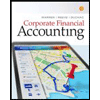
Concept explainers
Problem 9-3A Aging
On December 31, Jarden Co.'s Allowance for Doubtful Accounts has an unadjusted credit balance of S 14,500. Jarden prepares a schedule of its December 31 accounts receivable by age.
| » | B | _E_ | |
| 1 | Accounts | Age of | Expected Percent |
| 2 | Receivable | Accounts Receivable | Uncollectible |
| 3 | J830,000 | Not yet due | 1.25% |
| 254,000 | 1 to 30 days past due | 2.00 | |
| : | 86,000 | 31 to 60 days past due | 6.50 |
| 6 | 38,000 | 61 to 90 days past due | 32.75 |
| 7 | 12,000 | Over 90 days past due | 68.00 |
Required
1. Compute the required balance of the Allowance for Doubtful Accounts at December 31 using an aging of accounts receivable.
2. Prepare the adjusting entry1 to record bad debts expense at December 31. Check (2) Dr. Bad Debts Expense, $27,150
Analysis Component 3. On June 30 of the next year, Jarden concludes that a customer's $4,750 receivable is uncollectible and the account is written off. Does this write-off directly affect Jarden's net income?
Want to see the full answer?
Check out a sample textbook solution
Chapter 9 Solutions
FUNDAMENTAL ACCT PRIN CONNECT ACCESS
- Accounting?arrow_forwardExpand upon it and add more infoarrow_forwardJH, Inc., is a calendar year, accrual basis corporation with Joe as its sole shareholder (basis in his stock is $90,000). On January 1 of the current year, JH Corporation has accumulated E & P of $200,000. Before considering the effect of the distribution described below, the corporation’s current E & P is $50,000. On November 1, JH distributes an office building to Joe. The office building has an adjusted basis of $80,000 (fair market value of $100,000) and is subject to a mortgage of $110,000. Assume that the building has been depreciated using the ADS method for both income tax and E & P purposes. What are the tax consequences of the distribution to JH and to Joe? (In your answer, be sure to describe the effects on taxable income for both JH and Joe, the impact of the distribution on JH’s E & P, and Joe’s basis in the building.)arrow_forward
- Joe is the sole shareholder of JH Corporation. Joe sold his stock to Ethan on October 31 for $150,000. Joe’s basis in JH stock was $50,000 at the start of the year. JH distributed land to Joe immediately before the sale. JH’s basis in the land was $20,000 (fair market value of $25,000). On December 31, Ethan received a $75,000 cash distribution from JH. During the year, JH has $20,000 of current E & P and its accumulated E & P balance on January 1 is $10,000. Which of the following statements is true? a. Joe recognizes a $110,000 gain on the sale of his stock. b. Joe recognizes a $100,000 gain on the sale of his stock. c. Ethan receives $5,000 of dividend income.d. Joe receives $20,000 of dividend income. e. None of the above.arrow_forwardPlease provide the accurate answer to this general accounting problem using appropriate methods.arrow_forwardPlease provide the accurate answer to this general accounting problem using appropriate methods.arrow_forward
- I need help with this general accounting question using standard accounting techniques.arrow_forwardCan you help me solve this general accounting question using valid accounting techniques?arrow_forwardCan you solve this general accounting question with accurate accounting calculations?arrow_forward
- I am looking for the correct answer to this general accounting problem using valid accounting standards.arrow_forwardI am looking for help with this general accounting question using proper accounting standards.arrow_forwardPlease provide the answer to this general accounting question with proper steps.arrow_forward
 Corporate Financial AccountingAccountingISBN:9781305653535Author:Carl Warren, James M. Reeve, Jonathan DuchacPublisher:Cengage Learning
Corporate Financial AccountingAccountingISBN:9781305653535Author:Carl Warren, James M. Reeve, Jonathan DuchacPublisher:Cengage Learning Cornerstones of Financial AccountingAccountingISBN:9781337690881Author:Jay Rich, Jeff JonesPublisher:Cengage Learning
Cornerstones of Financial AccountingAccountingISBN:9781337690881Author:Jay Rich, Jeff JonesPublisher:Cengage Learning

